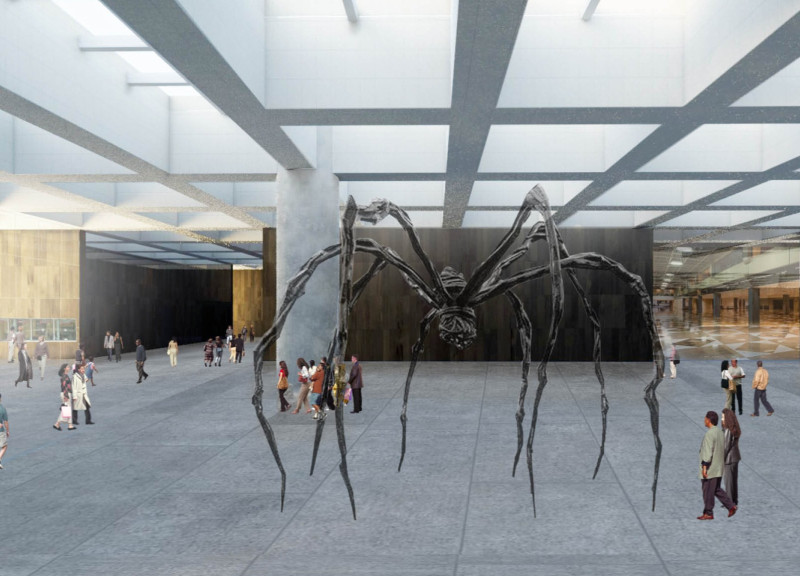5 key facts about this project
The Riga Exhibition Center Extension enhances the functionality and design of the urban landscape in Riga. Located next to the existing exhibition hall, it aims to improve visitor engagement and accessibility. The center combines modern architectural elements with the historical significance of the site. The design focuses on connecting the old and new structures, with an emphasis on bringing in natural light throughout the main spaces.
Design Concept
A key feature of the design is the modulated concrete roof, which allows for abundant natural light to flood the central area. This element not only serves as a structural component but also creates a bright and welcoming environment for visitors. The increased light contributes to a sense of openness, a vital quality for an exhibition space. It encourages exploration and interaction among guests.
Functional Spaces
The extension includes a variety of auditoriums, each with different seating capacities. This diversity allows the center to accommodate a wide range of events, from large conferences to smaller presentations. The design also refreshes the existing exhibition halls, enhancing their natural light intake. This connection between venues facilitates a smooth flow for visitors, making movement through the space easy and enjoyable.
Visitor Amenities
Beyond the main exhibition areas, the layout also incorporates essential services like a lobby, conference rooms, and a coffee shop. These spaces are thoughtfully arranged to support both formal activities and casual interactions. They provide visitors with opportunities to gather and reflect on their experiences. The design encourages social engagement, adding to the center's appeal as a cultural hub.
Design Details
Attention to detail is evident in the layout, with careful pathways and sightlines enhancing navigation throughout the center. This consideration benefits both exhibition curators and visitors, making the space intuitive and user-friendly. The architectural style maintains a modern yet understated character, allowing it to align with the historical context of the area. The result is functional design that fosters connections and exchanges, making it a valuable addition to Riga’s cultural landscape.


























